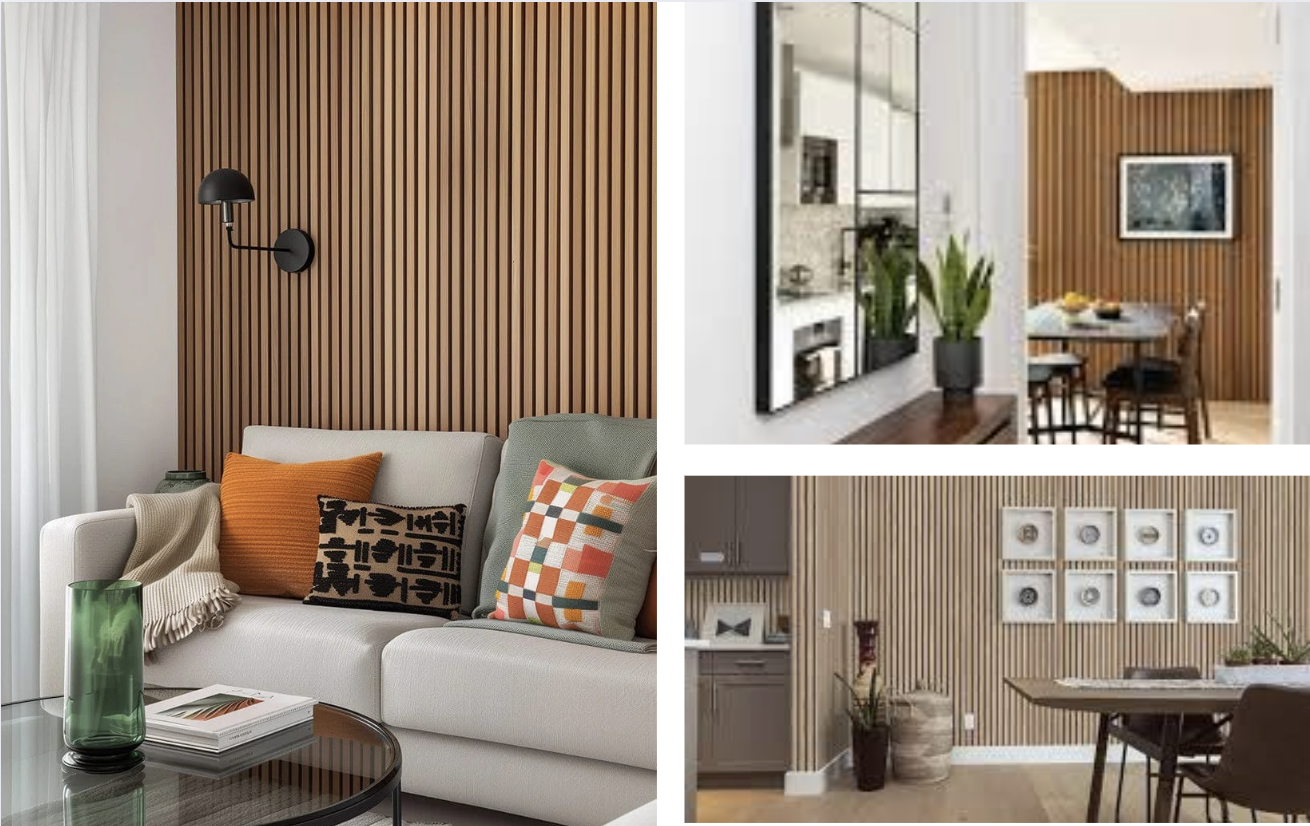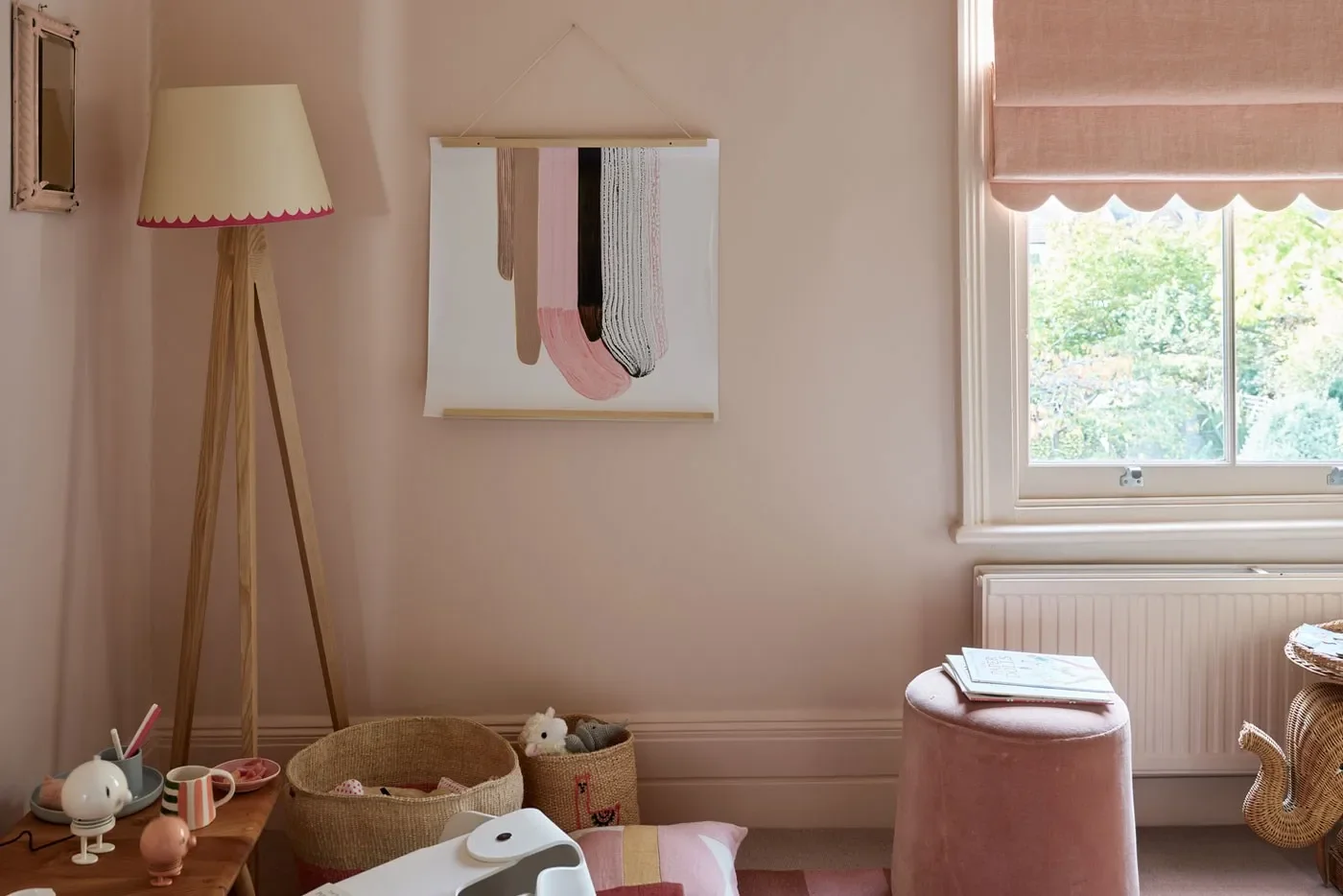5 Cheap Ways to Transform Your Home’s Interior
Upgrading and enhancing your home doesn’t always require a full renovation - sometimes it’s the subtle, strategic upgrades that make the biggest impact. From refreshing tired wall plates to adding elegant paneling or embracing bold color techniques like accent zones and color drenching, small design choices can completely transform how a space feels. These budget-friendly updates blend creativity with craftsmanship, delivering a high-end look that feels intentional, cohesive, and entirely your own.
Here are 5 ways you can completely transform a room (or home) on budget, all of which I have personally tested and love.
Images: Wood Veneer Hub
Opt for Paneling Over Paint or Paper
Let’s start with one of my favorites, since it’s currently on my Design-to-Do list for our Brooklyn apartment - acoustic (or non-acoustic) wall paneling!
Wall paneling is one of the most cost-effective ways to give an interior an instant high-end feel without a full renovation. For homeowners looking to enhance resale value or simply refresh their home’s aesthetic, wall paneling delivers a dramatic upgrade at a fraction of the cost of structural remodeling, while instantly adding sophistication and depth.
From classic wainscoting and beadboard to modern vertical slats or picture-frame molding, paneling can be customized to suit nearly any aesthetic—traditional, transitional, or contemporary. When painted in a sophisticated neutral or saturated tone, it elevates even modest spaces, making them feel more refined and intentional.
I personally love these acoustic wood slat panels from Wood Veneer Hub - they offer different colors, widths, and acoustic / non-acoustic variations.
Upgrade Your (Wall) Accessories
I LOVE this one, and it’s the first thing I do in any new rental or home.
Replacing outdated face plates and wall plates is one of the simplest yet most overlooked ways to elevate the look and feel of a room. These small details frame every light switch and outlet—features that naturally catch the eye—and when refreshed, they instantly make a space feel cleaner, more intentional, and well-maintained. Swapping yellowed plastic covers for modern alternatives in crisp white, matte black, brushed brass, or decorative finishes can subtly transform a wall from utilitarian to polished, complementing both the color palette and overall design aesthetic.
I personally love metallic finishes like oiled bronze, nickel, and brass that you can match to the other hardware in your room.
You can find cheap-yet-sleek looking plates at Home Depot, or online at Amerelle, Rejuvenation (pricier), and Wallplates.com.
Image: wallplates.com
Beyond appearance, upgrading wall plates can also bring cohesion and sophistication to a room’s design. Coordinating finishes with door hardware, cabinet pulls, or lighting fixtures creates a sense of continuity that professional designers rely on for a cohesive look. In high-end interiors or recently repainted rooms, new plates help complete the visual update—nothing undermines a fresh coat of paint like dated or paint-splattered switch covers.
From a practical standpoint, modern face plates are often slimmer, better-fitted, and easier to clean, offering both functional and aesthetic value. In a renovation or repainting project, replacing these small hardware details is an affordable finishing touch that communicates care, craftsmanship, and attention to detail—hallmarks of a thoughtfully designed home.
You can find cheap-yet-sleek looking plates at Home Depot, or online at Amerelle, Rejuvenation (pricier), and Wallplates.com.
Instead of defining an entire wall, this technique emphasizes architectural details or function-specific areas. Images: Decorilla
Trade the Accent Wall for an Accent Space
Accent walls are always a great way to conservatively add color, texture, or wallpaper in a room and create visual interest on a budget. Often accent walls are bold or saturated in color, meant to anchor and draw the eye to a particular focal point such as behind a bed or sofa, a fireplace, or gallery wall.
In smaller spaces like NYC apartments, accent walls (or ceilings) can make a space appear larger, but often times they’re not practical due to the more confined interior layouts or open concept designs.
By contrast, using color, texture, or wallpaper within a smaller zone—like a niche, hallway, ceiling, or built-in shelving—is a more subtle, layered approach to visual interest.
I did this in a former studio space when I was forced to change offices during Covid. I added geometric shapes and arches to section off areas of an otherwise “boxy” space, and it gave the illusion of separate rooms.
Whether it’s a soft, muted tone for a calming retreat or a rich, saturated hue for dramatic impact, color drenching adds depth and character that a traditional two-tone paint job can’t achieve. Image: Farrow & Ball
Color Drench a Room
If you read AD, Apartment Therapy, or any other design blog, chances are you’ve heard of or seen the phrase “color drenching”.
Color drenching—a design technique where walls, trim, ceilings, and even doors are painted in the same hue—creates a bold, immersive atmosphere that can completely transform a room. By enveloping the space in a single color, visual boundaries begin to disappear, allowing the eye to move seamlessly across surfaces. This effect makes a small space feel more expansive and cohesive, eliminating harsh contrast lines that can break up the room’s flow.
For small apartments or compact rooms—common in New York City homes—this approach is especially powerful. Painting everything in one continuous shade creates a unified backdrop that draws attention to architectural features, textures, and décor rather than the room’s size. A moody navy, clay taupe, or deep olive can make a small den or bedroom feel like an intentional, cocooning space, while lighter tones in cream or blush can create a serene, gallery-like openness.
Ultimately, color drenching is about atmosphere and emotion—it allows paint to define not just the walls but the mood of the entire space. It’s a designer-forward choice that feels both modern and timeless, turning even the smallest room into a cohesive, artful statement.
Neutrals are evolving: think clay, taupe, camel, olive‐green undertones rather than flat greys or stark whites. Benjamin Moore’s “Color Trends 2025” palette includes warm foundations like Leather Saddle Brown, Chowning’s Tan & Ashwood Moss. Image: Shutterstock
Paint in “New Neutrals”
A big trend in luxury residential interiors is the use of warm, nostalgic tones and “new neutrals” on walls, ceilings, and trim. These include colors like warm browns, taupes, and other beige hues that blend contemporary and traditional design to create a more elevated feel. Especially in NYC dwellings, pairing traditional architecture such as you might see in older brownstones and row houses with modern color updates can create a striking look in your home.
In Summary
Refreshing your home doesn’t have to mean starting from scratch—it’s about being intentional with the details that make the biggest visual impact. Whether it’s adding architectural dimension with wall paneling, upgrading everyday hardware, or embracing bold color techniques like color drenching and accent zones, thoughtful design updates can completely redefine how a space feels.
Our team at Undertone Interiors are pros when it comes to bringing these ideas to life with precision, creativity, and an eye for modern and clean design. If you’re ready to transform your space—whether it’s a single room or your entire home, contact us to discuss your vision and start creating an interior that feels uniquely yours!





